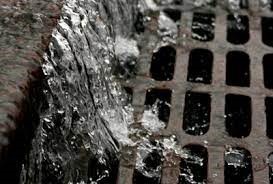This blog is the second in a two-part series about stormwater management. The first blog [Stormwater Management Basics] addressed the basics of stormwater management regulations. Green infrastructure options for stormwater management are presented below.
How does Green Infrastructure help with Stormwater Management?

An increasingly popular and holistic approach for effective management of stormwater runoff is the implementation of green infrastructure. Green infrastructure is the application of measures that use plant or soil systems, permeable pavement or other permeable surfaces, systems for stormwater collection and reuse, or landscaping. These measures facilitate the storage, infiltration and evaporation of stormwater, while reducing runoff to sewer systems or to natural water bodies. The foundation of green infrastructure is the implementation of a vegetative cover. Vegetative cover acts as an effective barrier in preventing erosion, by absorbing the energy of raindrops, slowing velocity of runoff, increasing infiltration, and helping soil to bind. Green infrastructure is cost-effective, resilient, and treats stormwater at its source while providing social and environmental benefits.
What are some of the social and environmental benefits of Green Infrastructure?
- In addition to water management, an increased vegetation cover can regulate atmospheric carbon dioxide levels by absorbing carbon dioxide, a greenhouse gas.
- Green infrastructure systems that collect and store stormwater can act as a source of water, thereby reducing the demand for water. This is especially useful in arid regions and highly water-stressed areas.
Examples of Green Infrastructure:
- Downspout Disconnection: Instead of routing rainwater into the storm sewer, this measure drains rainwater into rain barrels, cisterns, or permeable areas. It can be used to store stormwater or allow stormwater to infiltrate into the soil. Downspout disconnection can be particularly useful for cities with combined sewer systems.
- Rainwater Harvesting: Rainwater harvesting systems collect and store rainfall for later use. They slow and reduce stormwater runoff, as well as provide a source of water.
- Rain Gardens: Rain gardens are shallow, vegetated basins that collect and absorb runoff from rooftops, sidewalks and streets.
- Bioretention Areas: Bioretention areas collect and treat stormwater, allowing the water to filter through soil and vegetation. Bioretention areas are usually larger than rain gardens and designed with an underdrain to connect to the storm drain system.
- Planter Boxes: Planter boxes are urban rain gardens with vertical walls, which can be either open or closed systems. They collect and absorb rainfall from sidewalks, parking lots, and streets. They are ideal for space-limited sites in dense urban areas and as a streetscaping element.
- Bioswales: Bioswales are vegetated, mulched channels, which may require little or no irrigation. These systems provide treatment and retention as they move stormwater from one place to another. Vegetated swales slow, infiltrate and filter stormwater flows.
- Permeable Pavements: Permeable pavements infiltrate, treat and/or store rainwater where it falls. They can be made of pervious concrete, porous asphalt, or permeable interlocking pavers. This practice could be especially effective when land values are high and flooding or icing is a problem.
Green Roofs: Green roofs are covered with growing vegetation that enable rainfall infiltration and evaporation of stored water. They are particularly cost-effective in dense urban areas where land values are high, or on large industrial or office buildings where stormwater management costs can be prohibitive.
Is your site looking for cost-effective solutions to manage stormwater runoff? Do you need guidance on the relevant regulations associated with stormwater management practices? Walden’s team of engineers can assist you in complying with necessary regulations as well as provide customized solutions for stormwater management. Call us today at (516)-559-6979 to discuss your stormwater management needs.
Sources:
https://www.epa.gov/sites/default/files/2015-10/documents/sw_swppp_guide.pdf
https://www.epa.gov/green-infrastructure/what-green-infrastructure
